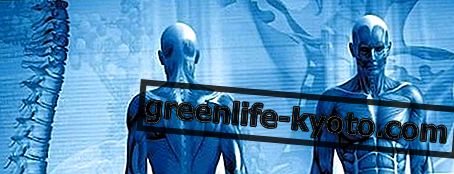
The Dentosophy (so called from "dens", tooth, and "sophia", wisdom) in the definition of its creators, dott. Rodrigue Mathieu and dr. Michel Montaud, is “a therapy characterized by a humanistic approach to dental art, based on known functional techniques, which highlights the link between the balance of the mouth, the balance of the human being and, more widely, that of the whole world ” .
This therapy starts from the recognition of the correlation between health of the mouth, of the body and of the psyche: the visible mouth is an expression of the invisible, the psyche. And in fact, as the therapy proceeds, parallel to the rebalancing of the stomatognathic apparatus, the patients experience a change in their worldview, while the physical and psychological problems are gradually attenuated.
In more than fifteen years of experience, the two authors have observed a systematic relationship between an unbalanced mouth and various pathologies, such as:
- headache
- backache
- dyslexia
- difficulty concentrating
- hyperkinetic children
- sleep disorders
- stress, depression
- ENT sphere problems
- allergic problems
- balance disorders
- articolar pains
The recognition of the link between disturbances of vital biological functions and the appearance of organic pathologies is very ancient. The first functionalist of which we have news is probably the Greek orator Demosthenes, who managed to correct his stutter by loudly reciting his orations with his mouth full of pebbles, facing the stormy sea.
However, historians attribute the authorship of philosophy and functional methods in the dental field to Pierre Fauchard and Nicolas Andry in the eighteenth century and to Pierre Robin in the early twentieth century.
These authors had realized that the deformations of the mouth were accompanied by organic dysfunctions, listing an impressive number of pathologies. These pathologies occur when the following neuro-vegetative functions are altered:
- sucking or its mature stage, chewing
- swallowing
- the phonation
- nasal breathing
These disturbed functions are the cause of both dysmorphosis at the level of the mouth, and of the diseases that accompany them.
All the functionalists have dedicated their efforts to the search for a device that would allow the correction of these functions, to obtain a modification of the oral cavity. The neuro-vegetative functions are established at the sub-conscious level: all the techniques that, for their correction, appeal only to the conscience and to the conscious will can only lead to partial results.
The main therapeutic tool used by Dentosofia is a rubber or silicone device, the multi-function activator. The therapy is based on day use (from one to two hours) and night-time activation. During the day a process of active conscious education takes place, during the night, however, the process is unconscious passive.
Fundamental to the success of the treatment are:
- regularity
- respect for bodily integrity: one must never go so far as to feel tensions, contractions, pain both in the oral cavity and in the neck, shoulders, back, etc.
- conscience: daytime exercises must be performed paying the utmost attention to what is happening in the mouth and body, seeking a subtle, refined perception of all sensations. The use of the activator during sports activities is excellent: there is an improvement in physical abilities and body perception.
From a neurophysiological point of view, all neurovegetative functions are interdependent and connected to each other. So working on one of them is like working on their whole and acting on their correction simultaneously enhances the results.
The multi-functional activator causes the modification of the shape of the arches and of the occlusion, changing the position of balance of the antagonist muscular forces, and modifies the static and dynamic position of the tongue.
In summary, the multi-functional activator leads to a re-education of the neuro-muscular masticatory system, of swallowing, phonation and nasal breathing.
The possibility of this re-education is linked to neuro-plasticity: for some years the importance of a substance, called neurotrophic factor, has been highlighted, which acts as nourishment for nerve cells, stimulating the proliferation of neuronal dendrites, to create new nerve connections.
Our nervous system contains a large amount of resting neurons, ready to be activated both physiologically and thanks to a therapeutic action.
Very significant is the fact that the neurotrophic factor is produced, inter alia, thanks to muscular activity and salivary glands.
Avant-garde neurology is showing that function creates the organ and that life is movement, postulates proposed for years by osteopathy and all functional therapies.
Bringing the activator one hour a day, nibbling it, allows to reach the central nervous system, through the production of neurotrophic factor, and therefore the neuro-vegetative functions.
Breathing and swallowing are also directly affected:
- the activator prevents the tongue from leaning against the dental arches and participating in atypical swallowing
- by carrying the apparatus, the patient can breathe only with the nose
- the activator acts on the chewing mechanism and allows to unlock the occlusion.
The work on the neuro-vegetative functions extends completely naturally to the suction and to the articulation of the sounds (in fact all the neuro-vegetative functions are interdependent and use the same structures), as well as to the cardiac rhythm (Macary's study of 1960 on hypertrophy cardiac arrest in all buccal respirators) and, finally, to the whole respiratory chain.
In conclusion, Dentosophy, through the observation of what is visible (the mouth) understands what is invisible and establishes therapy. The dysmorphoses of the mouth are addressed taking into account the role they have as external visible symptoms of what we cannot see.












